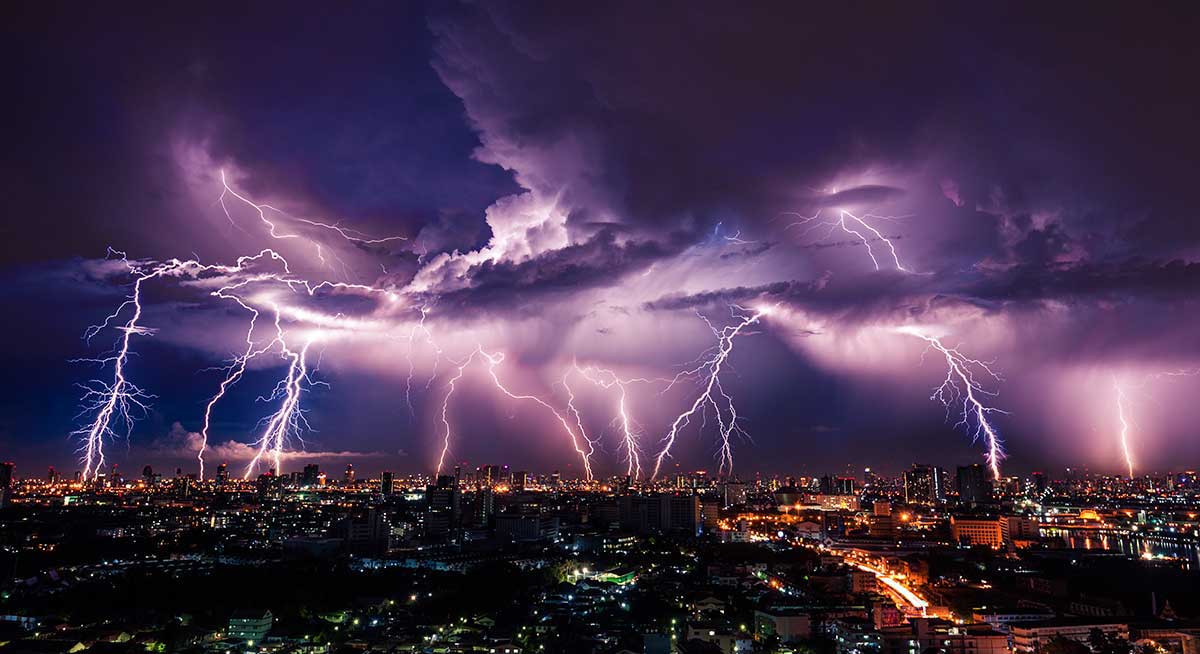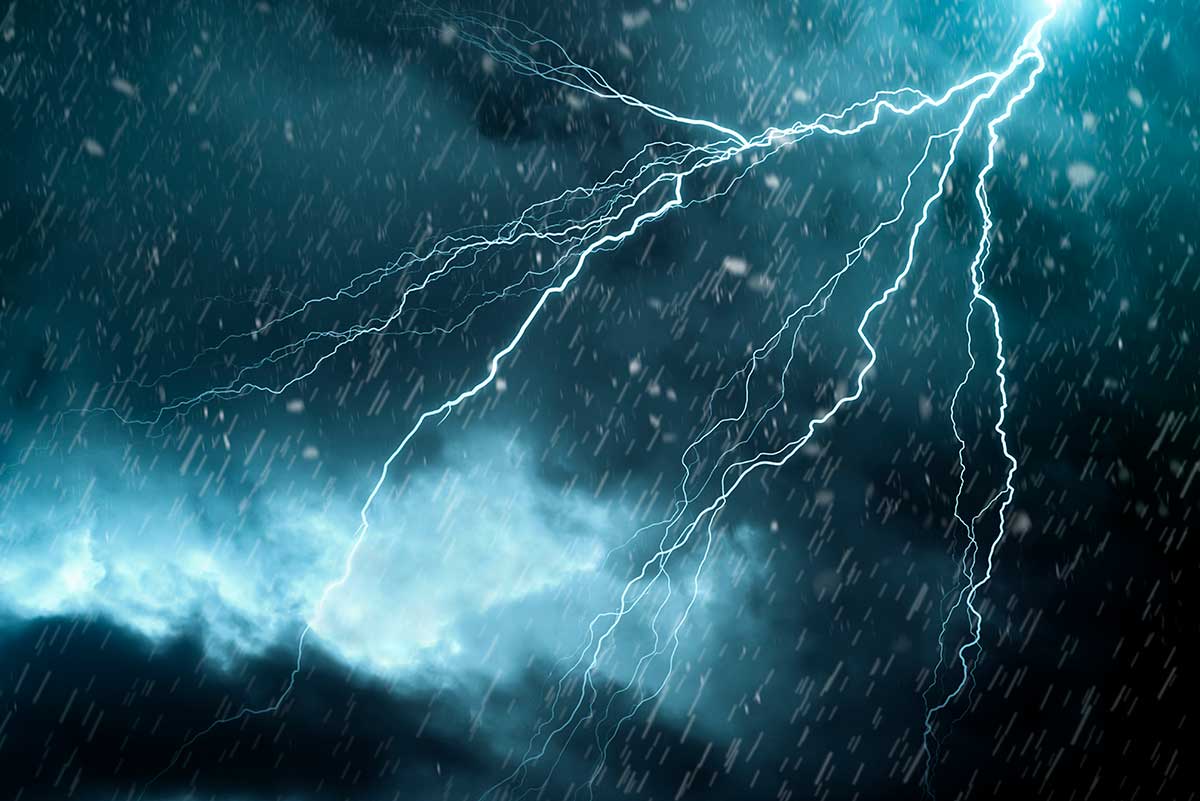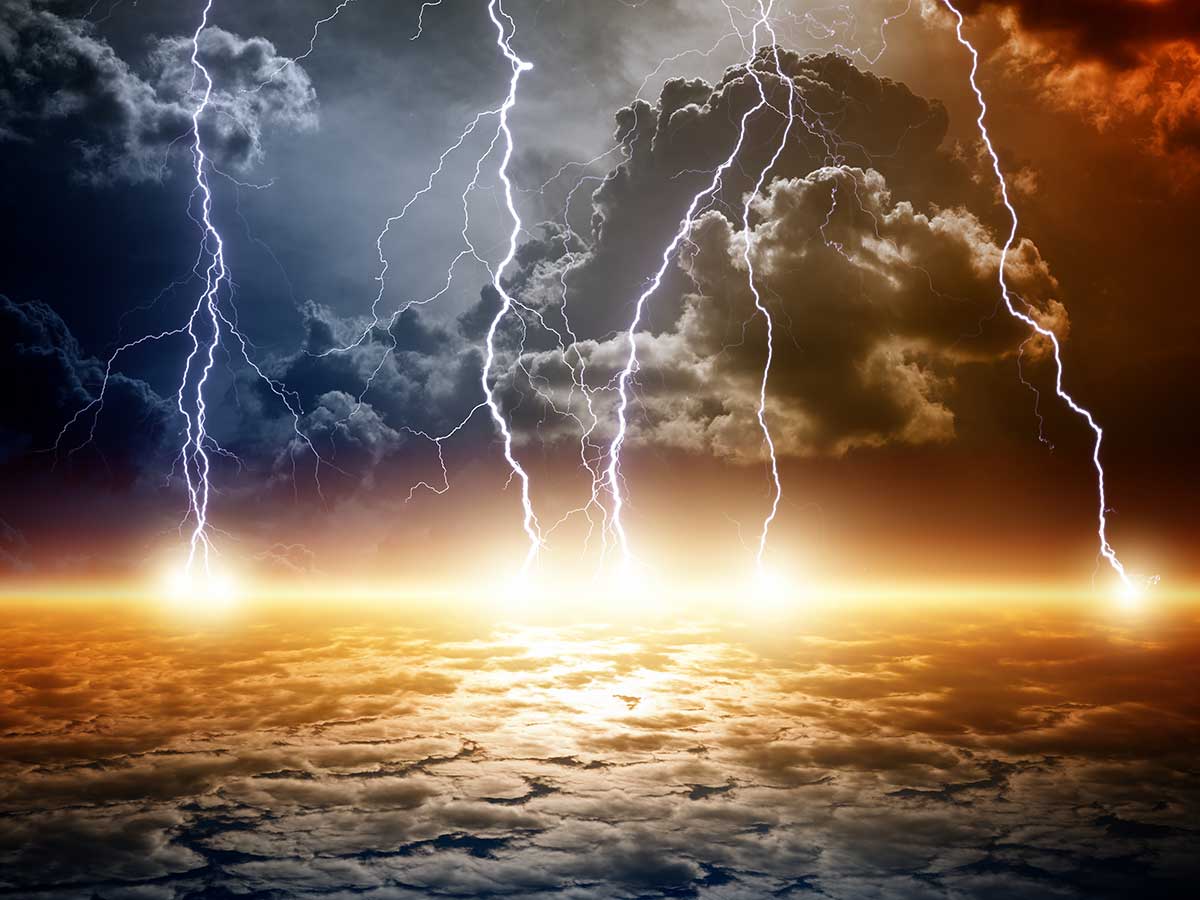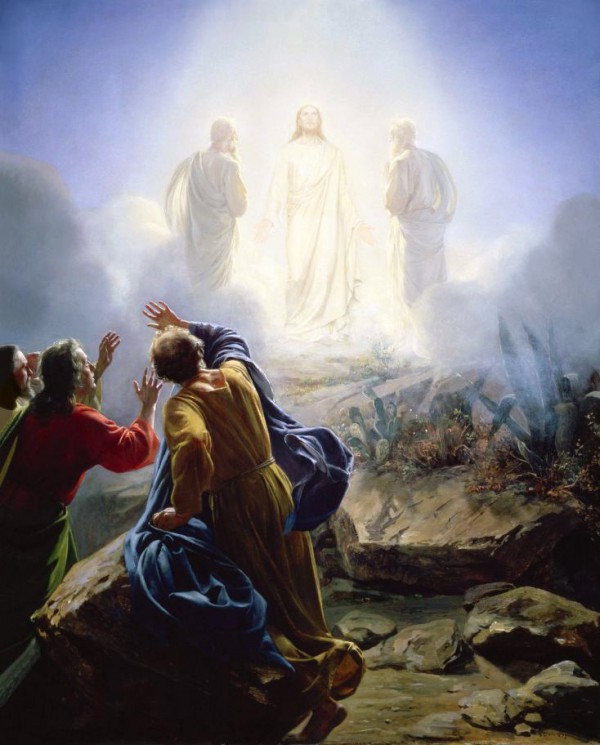
“Stop and consider the wondrous works of God. Do you know how God lays His command upon them, and causes the lightning of His cloud to shine?” (Job 37:14–15)
It happens when you least expect it. Open a car door. Reach out to a friend. Then ZAP! Getting shocked with static electricity isn’t fun. It also isn’t new.
In the 1700s, scientists experimented with “static” electricity, but Benjamin Franklin took it a step further with his kite experiment, proving that lightning was a form of electricity.
That was over 250 years ago, but in the Bible going back to the story of Moses 3,300 years ago, the Israelites often encountered God’s electricity in the form of lightning as well as mini-lightning bolts (static electricity).
Let’s take a fascinating look at how the Hebrew writers of the Bible described their electrical encounters with God and how the Creator of the universe used His command of lightning

A closeup of Baltic amber / chashmal (left) shows its fiery red brilliance, which makes it a good metaphor for describing something on fire. Baltic amber stones (right) show the variety of shades and textures in yellow/red amber. (Amber forms as tree resin hardens and becomes fossilized).
Chashmal Envelops the Body of God
Today in modern Hebrew and in the Bible, the word for lightning is בָּרָק – barak.
In the Bible, the Hebrew word חַשְׁמַל – chashmal only referred to the gemstone amber, which can be a fiery red color (as in the image above) as well as green, yellow, black, or a rare blue.
More than its striking appearance, amber has a very unique property: it can produce static electricity.
The Prophet Ezekiel likely knew about this “electrical” phenomenon of amber but had no scientific way to understand it.
So, when he described God’s form as bright, glowing amber in the following passage, he may have been thinking about the sparks that static electricity produces in addition to its fiery colors
In his vision of God’s throne, Ezekiel wrote:
“On this throne high above was a figure whose appearance resembled a man. From what appeared to be his waist up, he looked like gleaming chashmal (amber), flickering like a fire. And from his waist down, he looked like a burning flame, shining with splendor.” (Ezekiel 1:26–27)
Jewish commentators, such as Rashi say that we should not ponder this verse. However the Rabbis agree that it is speaking about God Himself, and His body is described as chashmal.
When light shines through amber, it indeed looks like fire or like “glowing metal” (as some Bible translations write it). But perhaps, Ezekiel saw mini-lightning bolts fly out His body as well.

Static electricity produces a spark, which some call mini-lightning bolts (YouTube capture)
Chashmal Becomes Modern Electricity
Before God re-established Israel in 1948, He also resurrected the Hebrew language, since the Jewish People had been scattered throughout the world for 2,000 years.
In the late 1800s, God used a religious Jewish man by the name of Eliezer ben Yehuda to re-establish the Hebrew language. He was born in Lithuania (under the Russian empire) and moved to Jerusalem in 1881.
At that time, no one spoke Hebrew in daily life in Israel. Hebrew was viewed as the Holy language, only to be used for praying and synagogue worship. Instead, the people spoke the languages from their home countries, mainly Yiddish.

Eliezer Ben_Yehuda
But God put in Eliezer’s heart to rebirth Hebrew as the spoken, read, and written language of Israel. He forced his family to speak Hebrew in their home, and he created the first Israeli Hebrew newspaper and dictionary.
His efforts were quite prophetic, as the Prophet Zephaniah wrote in chapter 3 verse 9:
“For then I will restore to the people a pure language, that they may all call upon the name of the Lord, to serve him with one accord.”
Eliezer, had to create many new words which were not found in the Bible, such as “electricity” which was discovered by Benjamin Franklin only about 100 years earlier. He chose the word chashmal.
Why did Eliezer choose that word?
When the Hebrew Scriptures were first translated into Greek about 2,100 years ago, the Hebrew word chashmal became the Greek word elektron.
Still, it only had the meaning of amber, and seems to be related to the Phoenician word elēkrŏn, meaning shining light.

William Gilbert M.D. demonstrating his static electricity experiments before Queen Elizabeth, by A. Auckland Hunt
In the 17th century, two English scientists (William Gilbert and Sir Thomas Browne) were trying to better understand the static electricity that amber produces. Gilbert called it electrikus, meaning like amber. Browne later changed the word to electricity, and the rest is history.
Judah Leib Gordon, one of the most notable poets of the Jewish Enlightenment of the 19th century helped popularize this new word when he wrote:
“The light, the heat, the steam, and the electricity (hash-ma-LA), all nature’s forces are the angels above.”
He explained in his footnote: “by hash-ma-LA, I mean the natural force that is electritzitat, since the Greek translation of hash-MAL is ‘elektrika.’” (HaAretz)

God appeared on Mount Sinai amid lightning, thunder, and earthquakes.
Lightning Illuminates the Power of YHVH Sabbaoth
Lightning is the most powerful of all forces. It races toward earth at 200,000 mph (322,000 km/h) and has enough power in one bolt to light up a house for 30 years.
Throughout the Bible, it is understood that lightning and all natural phenomenon are at the command of the God of Israel, YHVH Sabbaoth, the Lord of Hosts. And at key moments in Israel’s history, God has appeared in the midst of lightning or hurled it to earth to prove that He is Master of the universe and there is no other.
“He covers His hands with the lightning and commands it to strike the mark.” (Job 36:32)

For instance, in the seventh plague against Egypt, God sent hail and lightning, the worst storm Egypt ever had. This proved the God of Israel’s supremacy over the Egyptian gods of rain, thunder, and lightning.
Those who feared the Lord and brought their livestock and families inside were saved. (Exodus 9:13–35)
Perhaps they thought like Elihu in the Book of Job, who said:
“At this also my heart trembles, and leaps from its place. Listen closely to the thunder of His voice, and the rumbling that goes out from His mouth. Under the whole heaven He lets it loose, and His lightning to the ends of the earth. (Job 37:1–3)
Even though God possesses the power to destroy the entire earth with a wave of His hand, He deserves great reverence for using that authority righteously and justly. In fact, the righteous have appealed to God, asking Him to use His immense omnipotence to defeat their enemies, as when David pleaded:
“Open the heavens, LORD, and come down. Touch the mountains so they billow smoke. Hurl your lightning bolts and scatter your enemies! Shoot your arrows and confuse them!” (Psalm 144:5–6)

So, although God’s authority over lightning rightly invokes fear and trembling, it also commands reverence, honor, glory, and praise of Him who is righteous, just, and holy, holy, holy.
In the Book of Revelation is one of God’s final appearances on His throne. The Apostle John sees God in the midst of “flashes of lightning, rumblings and peals of thunder” with angels about and 24 elders seated around Him.
When the angels called out, “Holy, Holy, Holy, is the Lord God Almighty, who was and is and is to come!” the elders cast down their crowns, bowed in worship, saying:
“Worthy are you, our Lord and God, to receive glory and honor and power, for You created all things, and by Your will they existed and were created.” (Rev. 4:8–11)

Transfiguration of Messiah, by Carl Heinrich Bloch (1800s)
When God manifested in the form of a man, Yeshua (Jesus), His glory also manifested in a way that would invoke fear and reverence, glory and honor.
At times, as Yeshua’s Jewish disciples lived with Him, they got to see a piece of God’s glorious presence. This is how they described it:
On the Mount of Transfiguration, “His appearance was like lightning, and His clothes were white as snow.” (Matthew 28:3)
And “as He was praying, the appearance of His face changed, and His clothes became as bright as a flash of lightning.” (Luke 9:29)
Very soon (since many signs indicate that we are in the last days) this is how the Son of Man, Messiah Yeshua, will appear to the entire world when He returns:
“For as lightning that comes from the east is visible even in the west, so will be the coming of the Son of Man.” (Matthew 24:27; Luke 17:24)







